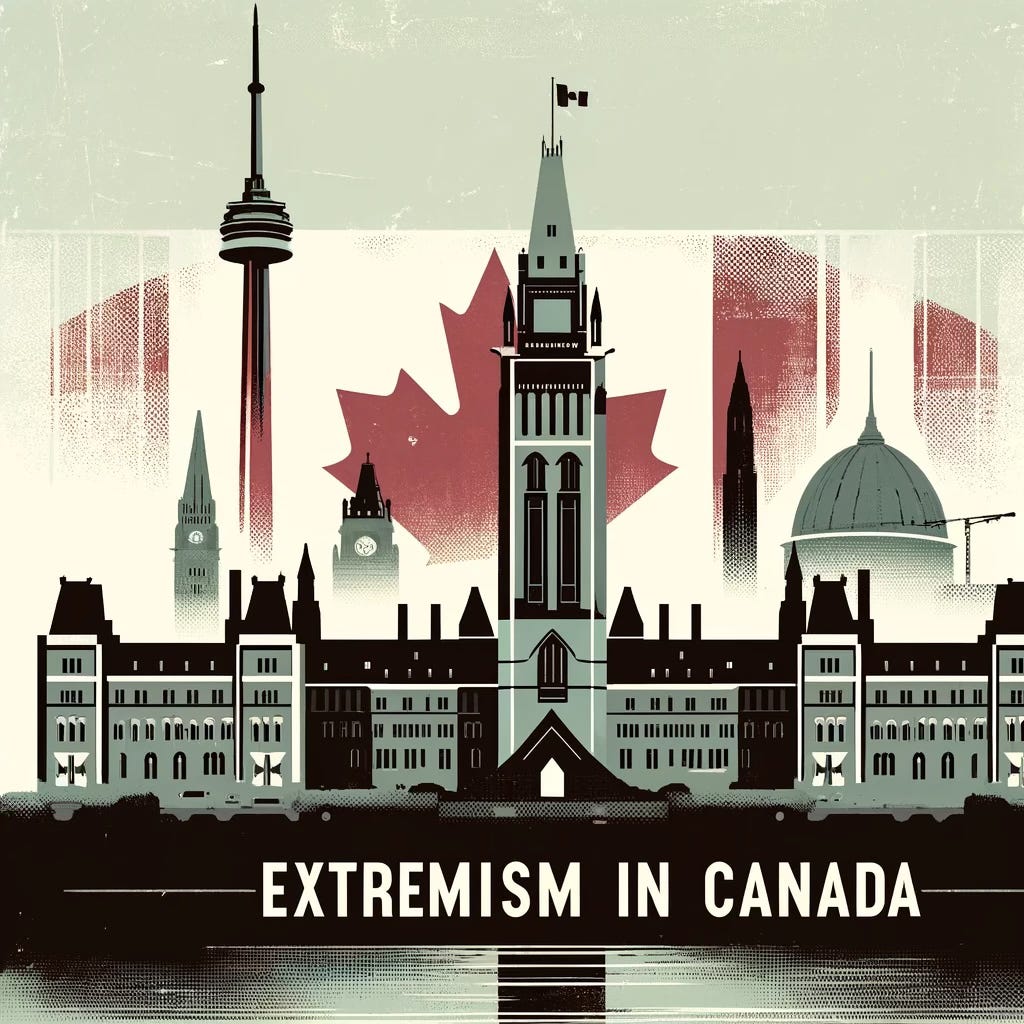Hello Insight Monitor subscribers! This week, we’re launching a ten-part series on the white power ecosystem in Canada. This is an important look at white power extremist groups operating in Canada, where they’re active, and what kind of incidents they’ve been involved in. Good news: the first in the series is already out, and it’s a look at the Diagolon network. We updated that analysis to include some of the elements we’re looking at in this series, specifically geographic dispersion and presence, known incidents, and financing methods and needs. Over the course of the next ten weeks, we will share more geopolitical analysis on these groups and their activities. We hope you find this insightful,
~Jessica
The series:
White Power in Canada
“White Power” describes specific social and political movements that subscribe to white supremacy, and that are active in pushing a country towards being a white ethnostate (white nationalism). In Bring the War Home: The White Power Movement and Paramilitary America, author Kathleen Belew defines white power movements as different from the white supremacist movements that existed prior to the Vietnam War because white power movements specifically target the state as opposed to claiming to act in service of it.
While white supremacy— a belief system that believes that Caucasian, “White,” or “Aryan” peoples are genetically superior to people of other ethnic backgrounds—does not necessarily force a country to fall into a particular political system, contemporary white power movements in North America often model their political systems after either fascist regimes, like Nazi Germany, or else the Southern United States’ Confederacy, an ethnocratic democracy. White Power movements promote their cause both violently through terrorism and non-violently through electoral politics.
The History of White Power Movements in Canada
While often overshadowed by our older and more populated Southern neighbour, as well as by the more mature white power movements of Europe, Canada has a long history of movements that promoted and conducted militant activity in the name of white nationalism. Canada’s first neo-Nazi group, Adrien Arcand’s National Unity Party of Canada, was formed in the image of Adolf Hitler’s National Socialist Worker’s Party years before Canada entered the Second World War.
In the 1970s and 1980s German national Ernst Zundel’s Samsidat Publishing made Toronto a recognized hub of Holocaust denial and neo-Nazi propaganda. In the 1990s, Canada’s Heritage Party tapped into a network of dedicated Canadian white nationalists and international allies to carry out a number of violent attacks.
In the 2010s, as contemporary white nationalists sought less militant strategies, Canadian white nationalists Lauren Southern and Stefan Molyneux became international figureheads of the “alt-right” political landscape. Canadian white supremacist Paul Fromm continues to promote white nationalist causes after over 50 years of white power activism, during 25 of which he also worked as a public school teacher.
Much like the US, Canada’s white power movements do not have the advantage of claiming Canada as a natural homeland, unlike how Europe’s white nationalists sometimes do. As such, they often capitalize on Canada’s history as a European colonial settler state that was established on land belonging to Indigenous people.
While designating violent white power as criminal or terrorist organizations can impact their capacity to raise funds and organize, and is an important signal to the public about the contours of terrorism and extremism, there are limitations to looking at white power networks strictly in terms of official groups. As this analysis will demonstrate, white power activists can be involved with multiple groups. In Canada, formal organizations are constantly splintering, and some networks can be difficult to even qualify as a group. Educational resources that are constantly updated, and that address individual actors and networks in addition to formalized groups, are the most effective tools to inform lawmakers, law enforcement, and professionals countering the advancement of white power groups.
If you want to learn more about how the January 6th insurrection on the US Capitol was financed, and what can be done to stop the next incident, have a read of our report that we prepared at the request of the United States House Select Committee to Investigate the January 6th Attack on the United States Capitol:
© 2024 Insight Threat Intelligence Ltd. All Rights Reserved.
This newsletter and its contents are protected by Canadian copyright law. Except as otherwise provided for under Canadian copyright law, this newsletter and its contents may not be copied, published, distributed, downloaded or otherwise stored in a retrieval system, transmitted or converted, in any form or by any means, electronic or otherwise, without the prior written permission of the copyright owner.




